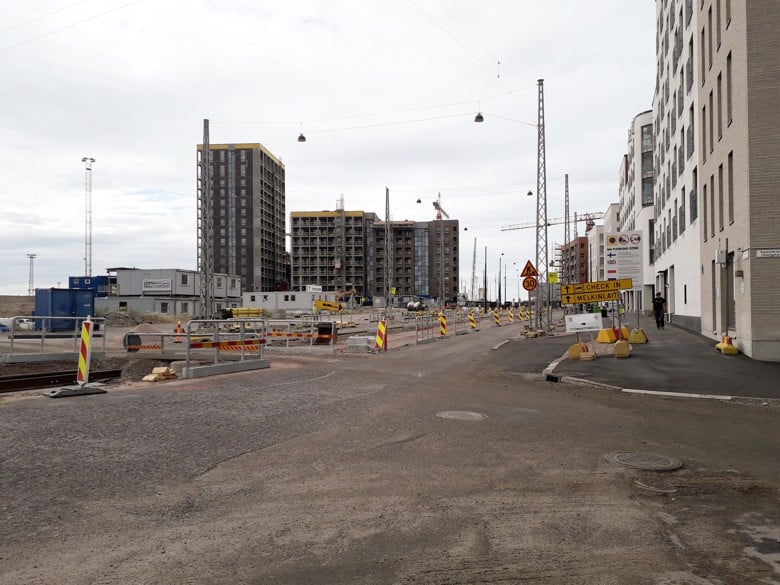Dust from construction sites reduces air quality

Construction sites are significant local sources of dust. Large construction sites can cause dust nuisance over a wide area for several years. With construction site traffic, dust can also be transported to nearby streets and roads. Large, visible particles of dust from construction sites principally cause the environment to become dirty and reduce comfort. Smaller, thoracic particles (PM10, less than 10 micrometres in diameter) are not visible to the naked eye. They find their way into the trachea and lungs and can cause health effects.
The magnitude of the dust nuisance is affected by many things, such as the proximity of housing, whether demolition or excavation work is carried out, and whether concrete is crushed or manufactured on the site, along with mortar. Things that have a particular impact include how much and how often work that causes dust is carried out – including cutting, sanding and sawing or, in street work, asphalt crushing or seaming of paving stones – as well as what the roadbeds are like before surfacing. The number and type of vehicles on the site, the quality of the soil and the weather conditions during the construction work affect the magnitude of the dust nuisance caused by the site.
People’s exposure to dust on and around construction sites can be effectively reduced through good planning. In addition, efforts must be made to bind the dust generated and prevent its spread. The spread of dust and other emissions across the lot boundaries should be prevented especially on construction sites in the vicinity of sensitive locations, such as hospitals, schools, kindergartens and nursing homes. It is good to place the construction site’s machinery, fuel and chemical storage, and tasks that produce dust as far away from the sensitive locations as possible.
We monitor the concentrations of thoracic particles in the vicinity of construction sites at three separate locations in the Helsinki metropolitan area from March to October. We report increases in dust concentrations to the cities’ environmental control unit, which will take measures to reduce dust if needed.
The monitoring is related to the City of Helsinki’s Air Quality Plan 2017−2024, based on which methods for measuring and monitoring the effects of dust from construction sites are being developed. The city is responsible for monitoring the environmental damage caused by construction sites. Dust control requirements are included in the cities’ environmental protection regulations as well as permit regulations for construction sites.